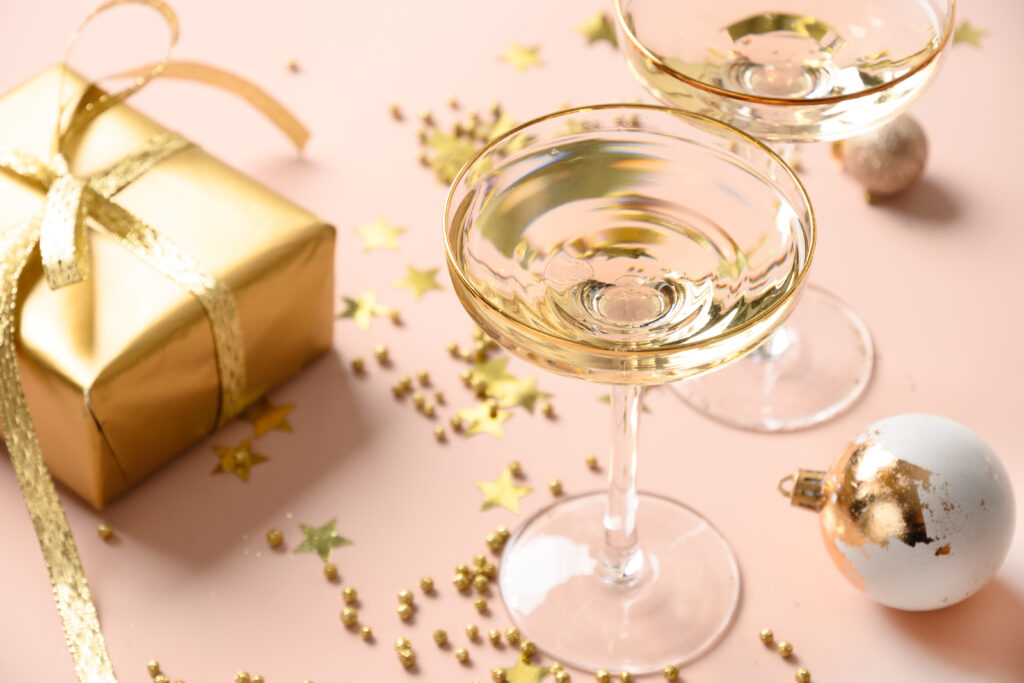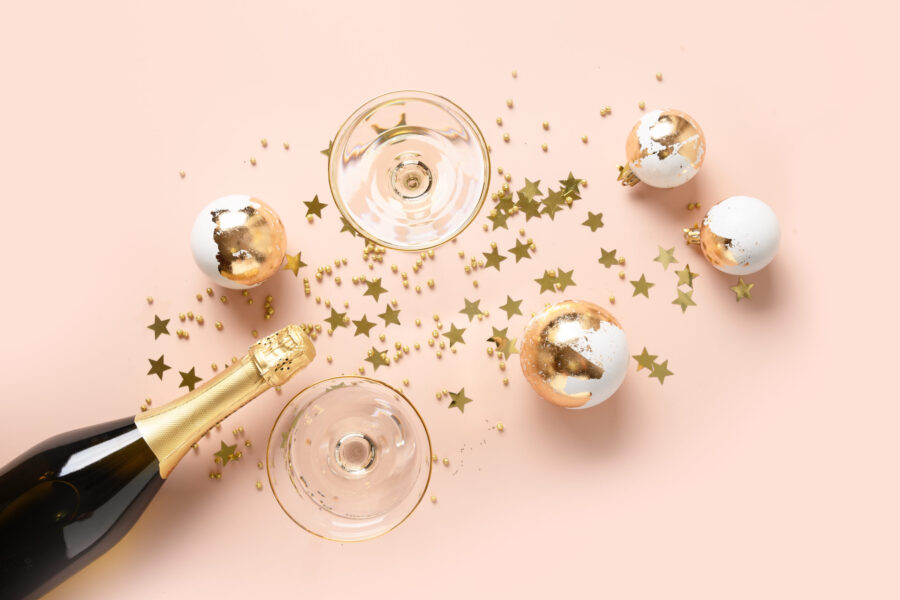How to Enjoy Sparkling Wine this Season
Pop, fizz, clink! The holidays signal the time to pop open a bubbling bottle of Champagne. Before you hastily grab a bottle off the shelf, take a little extra time to learn the best way to enjoy it. The right sweetness and method of serving can make any glass of sparkling wine just that much more enjoyable. Let’s uncork some important pro-tips.
Sweetness level
Sparkling wine is available in various sweetness levels—Brut Nature (driest), Extra Brut, Brut, Extra Dry, Dry, Demi-Sec, and Doux (sweetest). Giovanni Pavetto, general manager at Groves Liquor, says it is essential to understand each level. Those unfamiliar with sparkling wine might reach for “extra dry” and not realize that brut is drier. One sweetness level is not better than another—it comes down to what you enjoy, the occasion, and what you’re pairing it with. When asked what type to buy, Pavetto often asks the customer about their other preferences. If someone enjoys Moscato, a sweet Italian wine, he’ll recommend starting with demi-sec or doux. If their favorite is a crisp pinot grigio, he’ll likely recommend an extra dry Prosecco.
How to serve
Most sommeliers and experts agree that people often serve bubbly too cold and that 45 – 55 degrees Fahrenheit is ideal. By allowing the sparkling wine to warm up, you will be able to appreciate its more subtle nuance. Pavetto will often let a bottle chill in the fridge for just 20 minutes.

While most of us are familiar with the celebratory pop and the showmanship of handling a gushing bottle of Champagne, the proper way to open a bottle is striving to make a slight “hiss” instead of a loud “pop.” Start by holding the bottle at 45 degrees with a napkin over the cork and twist the base of the bottle while holding tightly onto the cork, allowing it to release slowly.
The Best Drinking Glass to Use
Many experts argue that a champagne flute is not the best way to enjoy a glass of sparkling wine. The narrow design allows bubbles to remain intact longer due to the reduced surface area; however, flavors are richer and more pronounced with more oxygen exposure. If keeping sparkling wine carbonated for longer is important to you, stick with a flute. If the taste is your primary goal, try using a tulip design, similar to a white wine glass. This design features a wider middle and narrower top, which provides the right balance of oxygen hitting the wine. The old-fashioned “coupe” design offers a fun vintage feel to any party; however, experts believe the mouth is too broad, causing bubbles to escape quickly.
Pavetto also encourages customers to understand that not all sparkling wine classifies as Champagne. To be labeled as “Champagne,” the sparkling wine must come from the Champagne region in northern France. Other common types of sparkling wine worldwide include Prosecco (Italy) and Cava (Spain).
If there’s ever a time for a little bubbly, it is the holiday season. Whether you’re at a party or relaxing at home in front of the fire, you can now confidently raise your glass. Cheers!—By Sasha Kuchinski
